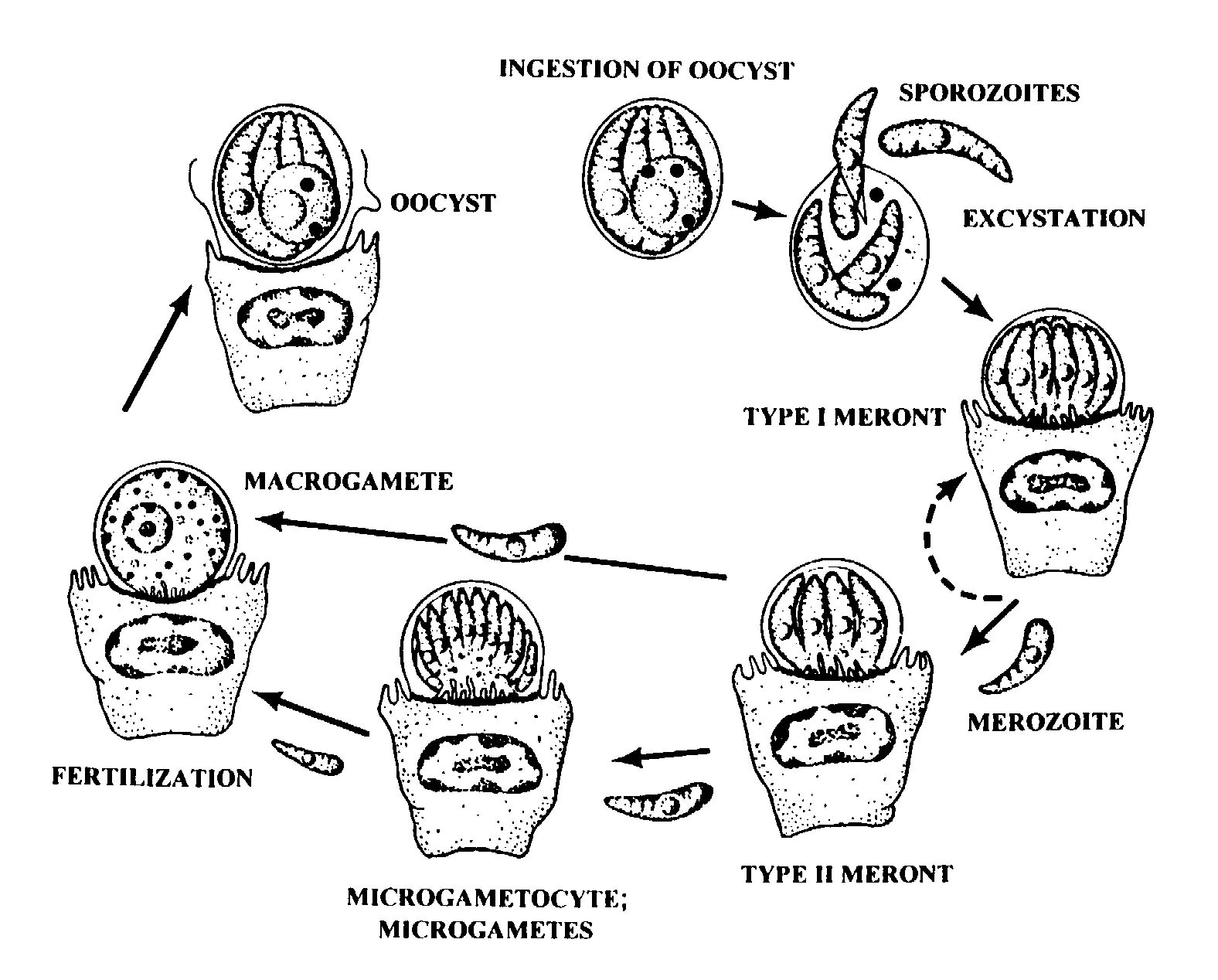

Biology 625
ANIMAL PARASITOLOGY
Supplemental visual material

|
Oocysts ingested. Four infective sporozoites exit through suture. Sporozoites penetrate epithelial cells, especially along the ileum. Multiple fission (=merogony) occurs, resulting in the 8 Type I merozoites within a Type I meront. Meronts rupture, releasing free merozoites. Merozoites penetrate new cells and undergo merogony to form additional meronts. Type I merozoites are thought to be capable of recycling indefinitely (autoinfection). Some Type I merozoites form Type II meronts, which contain 4 merozoites. Type II merozoites rupture out, enter new cells, and form macrogametes (=macrogametocyte) or microgametocytes containing 16 non-flagellated microgametes. Microgametes fertilize macrogametes. A resistant oocyst wall is then formed around the zygote, meiosis occurs, and 4 sporozoites are formed (sporogony). Oocysts are passed in the feces. About 20% of the oocysts are devoid of a wall and are sometimes termed "thin-walled oocysts." It is believed that the resulting sporozoites produced from thin-walled oocysts can excyst while still within the gut and infect new cells in a second autoinfective cycle. |
|---|
Original; line drawing by S.J. Upton

Home | Search | What's
New | Help | Comments
Kansas State University | Biology Division